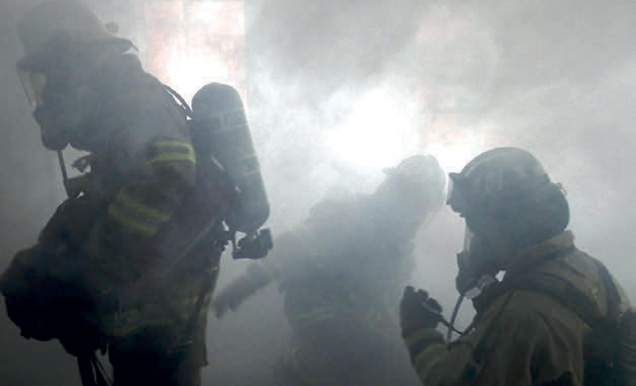Low Smoke Zero Halogen (LSZH) Cables: A guide for buyers

Low Smoke Zero Halogen (LSZH) cables, also commonly referred to as ZHLS, 0HLS or halogen-free flame retardant (HFFR) cables, are manufactured for use in applications where the smoke and toxic fumes associated with PE and PVC cables could be harmful to people or sensitive equipment during a fire.
A shift in safety regulations across Europe has led to LSZH cables becoming increasingly favoured for specific settings. Let's take a closer look at why this is happening, how these cables work and the standards you need to be aware of when selecting an LSZH cable for your project.
How do LSZH cables work?
In a fire, a cable’s outer sheathing will begin to combust. When exposed to a flame, cables made of PVC compounds will produce vast amounts of dense black smoke, toxic fumes and acid gases. In poorly ventilated or underground spaces where escape routes might be obstructed by smoke, these fumes can become fatal.
LSZH cables are made of a flame retardant outer covering, meaning that their primary decomposition product will absorb the energy from the flame, diluting the fire gases. This causes a charring which acts as a fire barrier, so less smoke and chemicals are released when the cable is burned.
Changes in legislation: when and where to install an LSZH cable
Prompted by several major fire disasters, developments in LSZH legislation have been in motion for many years. The official investigation into the Kings Cross Station fire of 1987 confirmed that the majority of the disaster’s 31 fatalities were a result of PVC-related toxic fumes. A similar outcome was determined of the 1996 Dusseldorf airport fire, in which 27 deaths occurred.
As a result of these incidents, the use of PVC cables has been restricted across several European countries. Ireland, for example, has made the use of LSZH cables mandatory, linking to the Construction Products Regulations (CPR). Meanwhile, countries such as Switzerland, The Netherlands, Germany and Greece have made LSZH a legal requirement in high-risk environments such as evacuation routes and/or high-rise buildings.
Whilst most cable types will now be available with LSZH sheathing, each installation must be considered on its own merits. In order to offer low smoke, zero halogen properties, the jacket of an LSZH cable uses a high percentage of flame retardant additives (fillers). This can impact properties such as flexibility, chemical and water resistance – so bear this in mind when weighing up the needs of your project.
Which standards should LSZH cable buyers look out for?
For a cable to be verified as LSZH, it must undergo a series of performance and compliance tests to ensure it meets European and international standards. Here are some of the key standards and testing procedures that cable buyers should seek to confirm their cables are in compliance with.
IEC/EN 61034-1/2 specifies a smoke density test performed inside a 3-cubic metre chamber. While burning PVC has been found in testing to reduce light visibility to 10% (i.e, the thickness of the smoke obscures overall vision by 90%), certified low-smoke cables will have a minimum light transmittance of 60%. In the event of a fire in an enclosed space, this ensures that escape routes remain unobstructed and in reasonably clear view.
IEC/EN 60754-1 stipulates that emissions of the highly toxic, acid gas hydrogen chloride (HCI) by LSZH cables must not exceed 0.5%. When PVC is burned, as much as 30% of emissions released can be HCl. To certify a cable as LSZH, a testing process sees 1g+/-0.005g of cable insulation material placed in a tube furnace and heated to 935ºC for 30 minutes. The gases produced are absorbed into a catch solution, which is then made up into a litre of liquid.
Following a similar process, IEC 60754-2 measures the pH of the solution and tests its conductivity values. Low Smoke Zero Halogen materials are defined as having a pH no less than 4.3 and a conductivity not exceeding 10µS/mm.
Commonly specified LSZH cables
N2XH cables in both Class 2 and Enhanced Flex Class 5 variants are low voltage 0.6/1kV low-smoke, zero halogen power cables with a flame-retardant, non-corrosive FRNC outer sheath to reduce fire propagation risk and protect sensitive equipment. These cables are available with CPR classifications suitable even for installations designated high-risk. Manufactured to IEC 60502-1. Eland Cables holds the largest stockholding of N2XH cables in Europe, making them available on-demand for projects.
N2XSH & NA2XSH European Medium Voltage LSZH power cables in 6/10kV, 12/20kV and 18/30kV have either copper or aluminium conductors and are also available with additional waterblocking layers. Manufactured to IEC 60502-2 and available direct from stock.
BS6724 & BS7835 AWA single core and SWA multicore LSZH armoured cables (0.6/1kV and 6.35/11kV / 19/33kV respectively) providing additional mechanical protection for buried installations, to British standards. Available from stock for next-day delivery
EN 50288-7 RE-2X(st)H LSZH instrumentation cables to the European standard, available with collective screening or with PimF (pairs in metal foil) individual screening. Available from stock across a large range of sizes.
Why choose Eland cables for your LSZH cables?
As a market-leading supplier with a comprehensive range of cables for power, data & control applications, Eland Cables are well-positioned to understand the importance of selecting the correct LSZH cable for your project.
We're committed to assuring product quality and compliance for each and every one of our LSZH cables. Rigorous testing is undertaken in The Cable Lab, our globally recognised facility holding IEC/ISO 17025 and IECEE CBTL, including IEC 60754-1 and IEC 60754-2 for halogen gas emissions testing and gas acidity testing, as well as vertical flame testing to IEC 60332-1-2 to assure self-extinguishing properties meet the parameters of the standard.
To discuss your specific requirements, get in touch with one of our experts today.